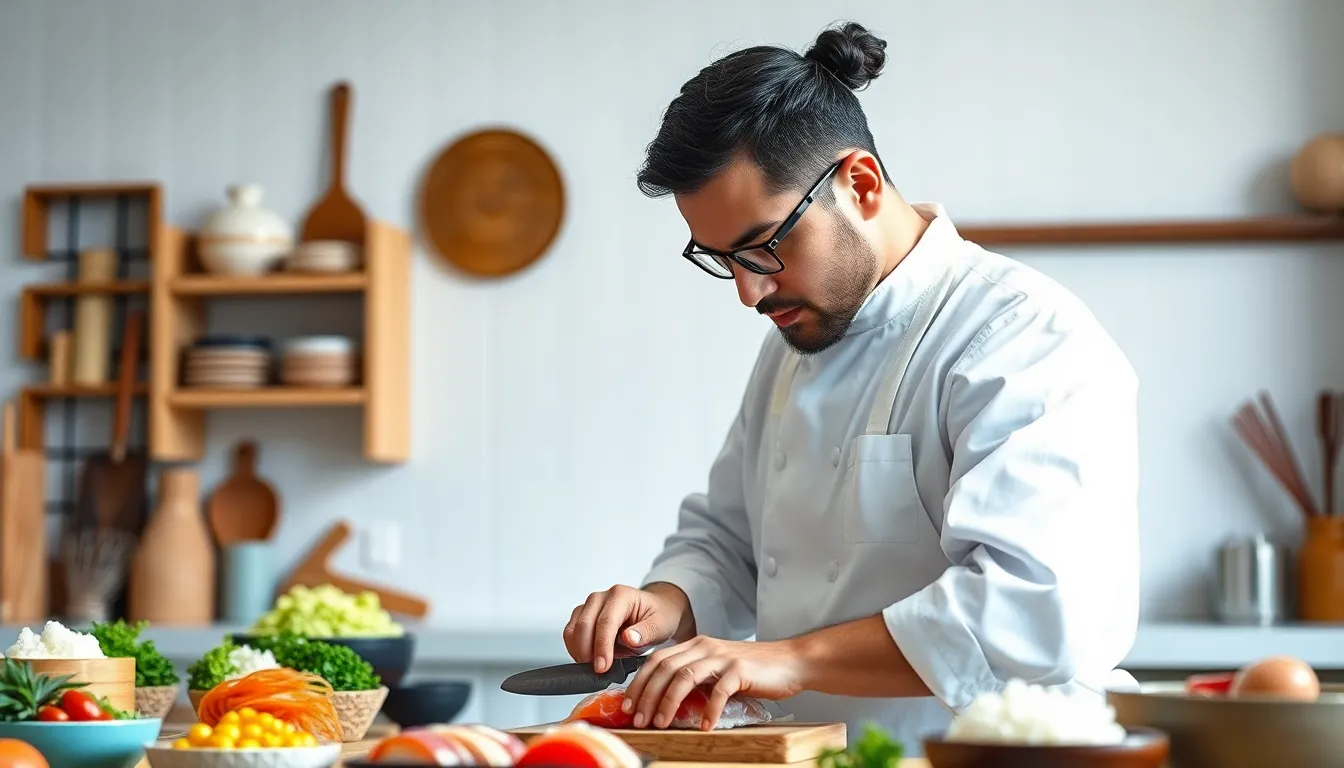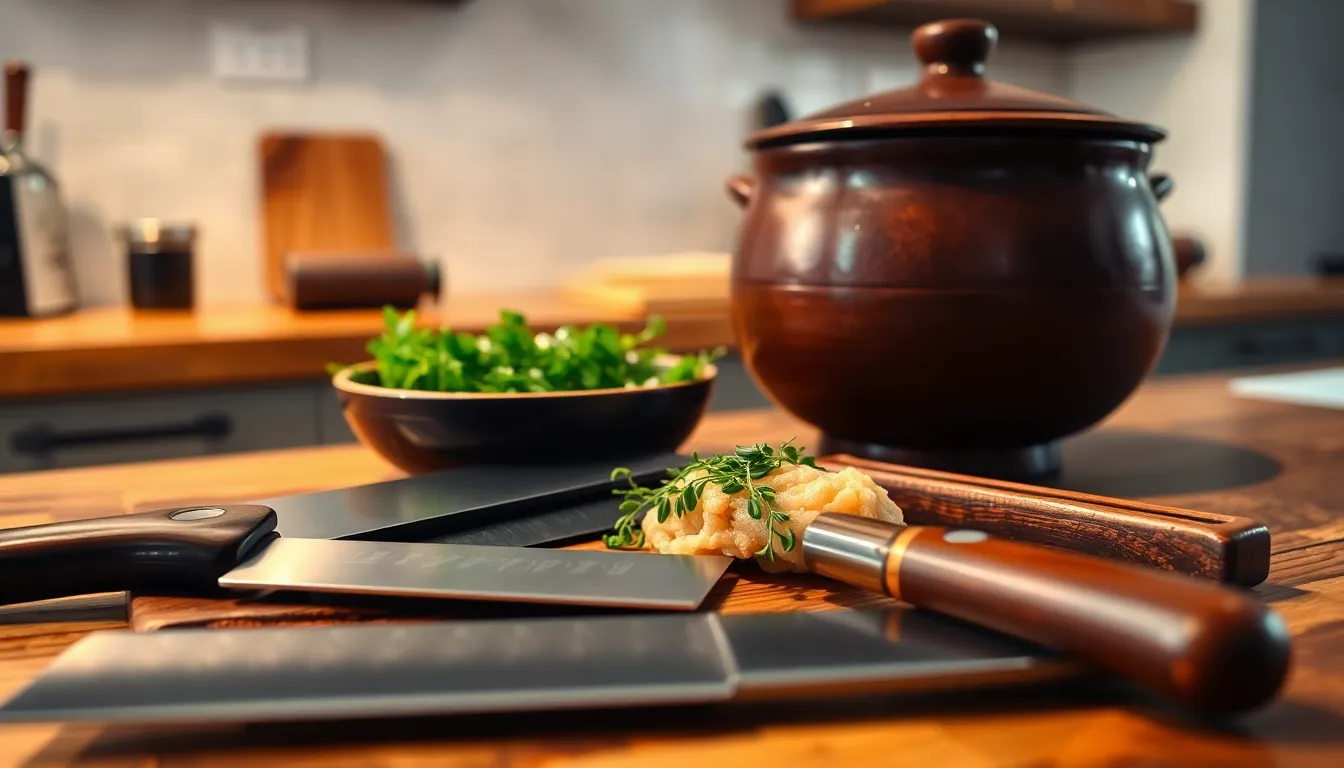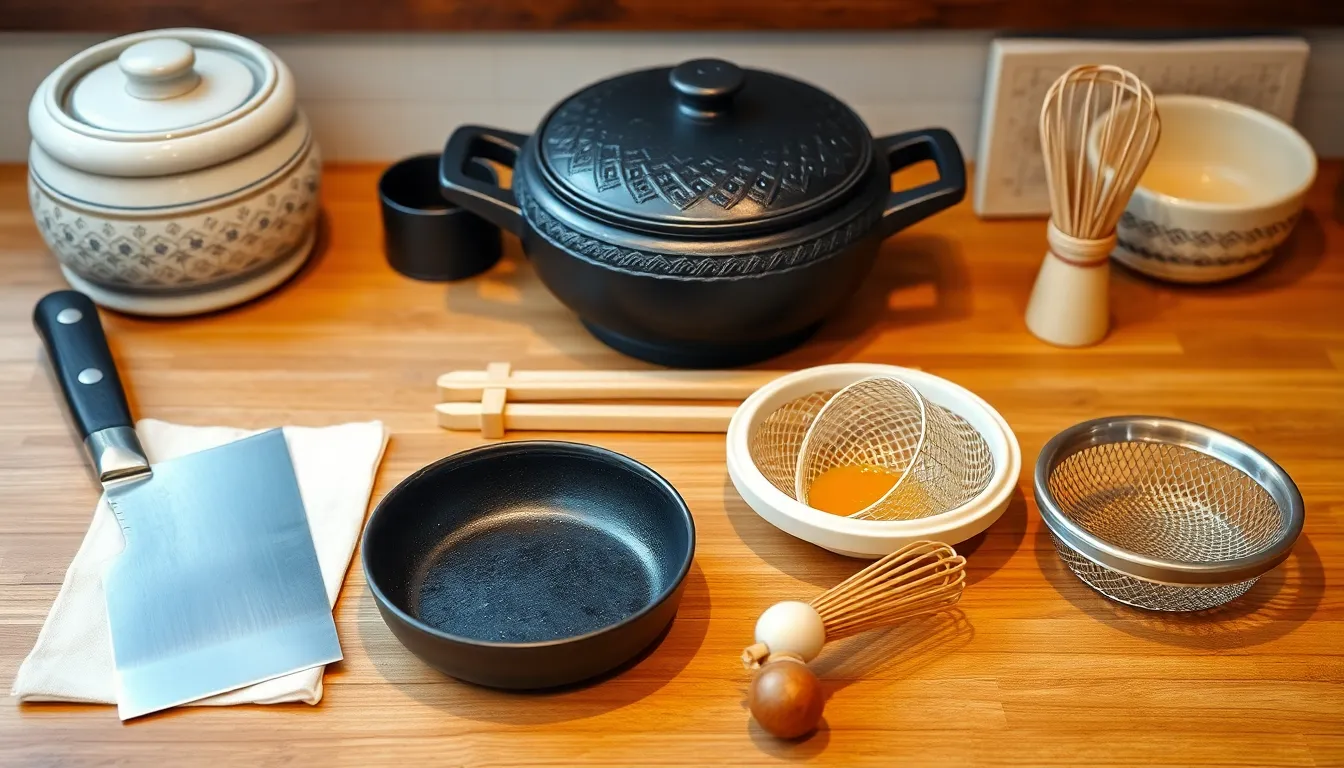
Japanese Cooking Techniques: Master the Art of Flavors and Culinary Elegance
Japanese cooking techniques are a culinary adventure waiting to be explored. From the delicate art of sushi rolling to the precise knife skills of a seasoned chef, these methods transform simple ingredients into extraordinary dishes. It’s not just about food; it’s a way of life that celebrates harmony, balance, and a touch of zen.
Japanese Cooking Techniques
Japanese cooking techniques showcase precision and elegance, transforming simple ingredients into extraordinary meals. Techniques such as sushi rolling, slicing, and steaming play crucial roles in the cuisine, each contributing to the final dish’s aesthetic and flavor. Mastery of knife skills marks an essential component of these methods, emphasizing clean cuts for optimal texture and presentation.
Rice preparation stands at the center of Japanese cuisine. Achieving fluffy, perfectly cooked rice requires rinsing, soaking, and controlled cooking, highlighting the significance of attention to detail. Understanding the intricacies of dashi, a fundamental broth, enhances umami flavors in numerous dishes.
Grilling offers another technique that distinguishes Japanese cooking. Methods like robatayaki utilize open flames to impart smokiness, while yakitori focuses on skewered chicken, showcasing the beauty of simple ingredients expertly prepared. Each grilling method brings a unique taste and texture that elevates the dish.
Steaming serves as a healthy alternative, often employed for vegetables, fish, and buns. Techniques like chawanmushi, a savory egg custard, utilize steaming to achieve a delicate texture while preserving flavors. Each ingredient maintains its characteristics, contributing to overall harmony.
Fermentation remains vital in Japanese cooking, enriching flavors and preserving ingredients. Miso, soy sauce, and pickles like tsukemono highlight this technique, showcasing the balance between taste and health benefits. Traditional fermentation methods add depth to dishes while embodying the culture’s commitment to craftsmanship.
Hands-on practices such as kaiseki, a multi-course dining experience, exemplify the philosophy behind Japanese cuisine. Each dish represents seasons, aesthetics, and culinary balance, demonstrating the artistry involved in meal preparation. Overall, these techniques create a unique culinary landscape that exemplifies Japan’s rich culinary heritage.
Essential Tools for Japanese Cooking


Japanese cooking requires specific tools that enhance both technique and flavor. Proper equipment transforms the cooking process and contributes to the final dish’s quality.
Knives and Cutting Techniques
Knives form the cornerstone of Japanese cooking. A Santoku knife excels for general tasks, while a Nakiri knife cuts vegetables with precision. Mastering various cutting techniques improves presentation and texture. Techniques include slicing, julienning, and dicing, each requiring different styles of cuts. Consistent knife skills enhance the overall quality of dishes.
Cookware and Utensils
Cookware plays a vital role in achieving authentic Japanese flavors. Donabe, a clay pot, steams and simmers ingredients evenly. Cast iron skillets distribute heat well, ideal for sautéing or frying. Each utensil, from bamboo whisks for matcha tea to fine meshed strainers for making dashi, has a specific purpose. Specialized tools elevate the cooking experience, ensuring traditional methods are respected.
Key Cooking Techniques
Japanese cooking employs various techniques that bring out the essence of ingredients while showcasing precision and care. Each method contributes to the unique flavors and textures found in Japanese cuisine.
Simmering (Nizakana)
Simmering involves gently cooking ingredients in a flavorful broth, often made from dashi. This technique enhances taste and tenderness. Traditionally, fish is the main ingredient, but vegetables also benefit from this method. Kabocha, for example, becomes soft and rich. The temperature remains low, allowing flavors to meld without losing nutritional value.
Steaming (Mushimono)
Steaming preserves the natural essence of ingredients, making it a preferred technique. In Japanese cuisine, this method maintains the vibrant colors and nutrients of vegetables and fish. Chawanmushi, a savory egg custard, exemplifies this approach, incorporating dashi for depth. Steamers using bamboo contribute subtle aromas to the dish, creating an authentic experience.
Grilling (Yaki)
Grilling in Japanese cooking includes several methods like yakitori and robatayaki, showcasing the umami flavor. Skewered chicken and seasonal vegetables are grilled over charcoal, infusing a smoky taste. Marinades, often consisting of soy sauce, mirin, and sake, enhance flavor profiles. The presentation is as important as the taste, with char marks adding visual appeal.
Deep-Frying (Karaage)
Deep-frying, particularly karaage, delivers a crispy texture and rich taste. Chicken marinated in soy sauce, garlic, and ginger takes center stage in this technique. A light coating of potato starch provides crunch while keeping the meat juicy. Perfect for casual dining or bento boxes, karaage highlights the versatility found in Japanese cuisine.
Flavoring and Seasoning in Japanese Cuisine
Flavoring and seasoning play a vital role in Japanese cuisine, emphasizing balance and depth in every dish. Understanding umami and the use of traditional condiments provides insight into this culinary art.
Umami and its Importance
Umami, often described as the fifth taste, significantly enhances flavors in Japanese cooking. Derived from ingredients like dashi, soy sauce, and miso, umami contributes a savory richness. This taste transforms bland ingredients into delicious meals, making balanced flavors essential for creating traditional dishes. Combining elements like meat, fish, and vegetables richly layers dishes. Recognizing umami’s impact supports a deeper appreciation for the craft behind Japanese cuisine.
Traditional Condiments
Traditional condiments are fundamental to seasoning in Japanese dishes. Soy sauce, a staple, adds saltiness and enhances umami flavor. Miso, fermented soybean paste, infuses complexity and depth into soups and marinades. Rice vinegar brings a tangy brightness, balancing rich flavors in salads and dressings. Mirin, a sweet rice wine, often enriches glazes and sauces. Sesame oil provides nuttiness, while wasabi adds heat and pungency, highlighting ingredient freshness. These condiments not only elevate single ingredients but also embody the essence of Japanese cooking.



